The colony today.
They have some larvae on the go (they like to stick the larvae to the wall above the water tower) and they also have a new pile of eggs.

Here you can see how they stick the larvae to the wall:

And their new pile of eggs:


The colony today.
They have some larvae on the go (they like to stick the larvae to the wall above the water tower) and they also have a new pile of eggs.

Here you can see how they stick the larvae to the wall:

And their new pile of eggs:

These girls continue to produce more brood
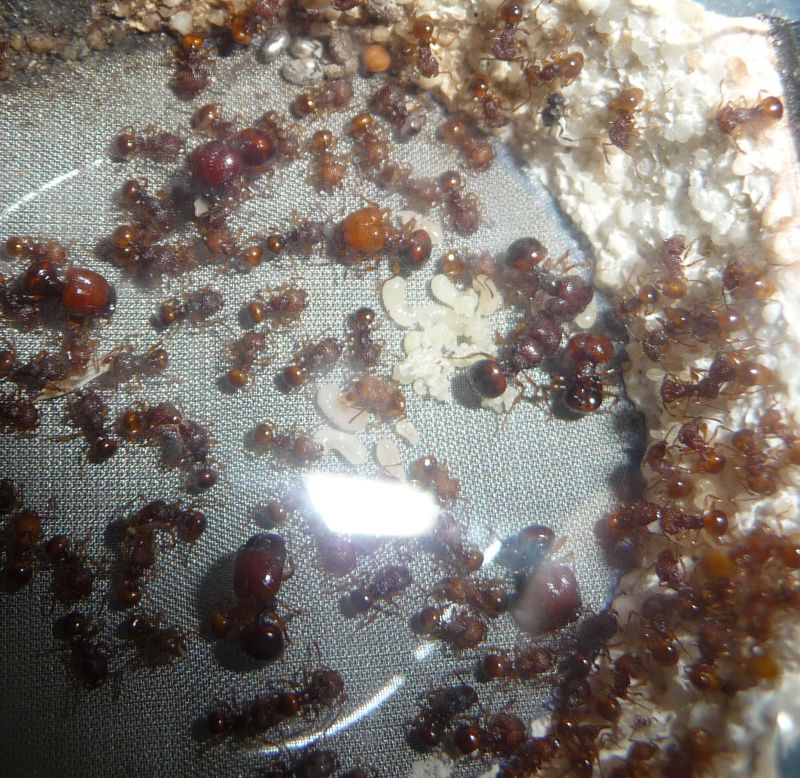
They also always carry a few seed into the nest, where they let them sprout and then they process them.
Different to my Messor ants, they never carry many seed into the nest, most of the seed stay in the food dish outside the nest.
They only seem to take as much as they can process at a time, so they do not create massive stores as Messor ants do.

Hello! I also recently got acanthomyrmex thailandensis. The colony is still small. There is little information on the Internet about keeping this species. I wanted to ask you, as someone more experienced. How did you move them from the test tube, connect the silicone hose to the farm and wait for them to move on their own?
Edited by Ivan, May 3 2025 - 3:44 PM.
I so dig on this colony, and in fact all the colonies you keep here are deluxe cool to check out.
Hello! I also recently got acanthomyrmex thailandensis. The colony is still small. There is little information on the Internet about keeping this species. I wanted to ask you, as someone more experienced. How did you move them from the test tube, connect the silicone hose to the farm and wait for them to move on their own?
With most ants, yes you can just hook up their old home to the new one and wait.
As long as you make conditions good in the new nest(ideal temps and humidity for them), while you let the old nest go to bad conditions(stop heating it, stop hydrating it). They will move themselevs to where ever they find conditions are more optimal.
If their seem to refuse to move after a few days, you can try keeping their old nest uncovered and setup a bright light shining on it to make it extra sucky to live in as encouragement to move out.
Hello! I also recently got acanthomyrmex thailandensis. The colony is still small. There is little information on the Internet about keeping this species. I wanted to ask you, as someone more experienced. How did you move them from the test tube, connect the silicone hose to the farm and wait for them to move on their own?
Well, I made the experience that these ants do not run away, but form a defensive ball and stay still. This is why I actually can open up the nest and clean the active nest if they accumulate trash there.
I will be honest-
instead of stressing the ants for a couple of days to get them to move, I just dumped them (the defensive ball of ants) very unceremoneously into their new nest. So the drama was over in just 2 seconds. They found their way into the nest very quickly. Have a look at the first page of this journal- I had them first in a temporary setup, but the colony stayed in the test tube, and then I transferred them to the new nest where they still reside.
I never came back to my original plan to settle them into a Wakooshi nest- the one they currently have is perfect.
I know some people really believe in patiently adjusting light and dryness to make the ants move voluntarily, taking days, and even is it is "low stress", making them feel uncomfortable and in the spotlight (literally) for long periods is still stress. Some species that are very delicate might need it. Some might totally hate it. Some, like Lasius niger, might not move even at the pain of death.
However, with all the colonies that I keep, the fast "in/out" method did work well and so far, none of them have died and none of them have devoured brood or gone into hunger strikes.
Edited by Ernteameise, May 5 2025 - 11:58 AM.
the majors are adorable lol
Currently keeping: Brachymyrmex patagonicus (one queen)
Wanting: Camponotus pennsylvanicus, Atta texana
You have whatsapp or telegram ? I wanna share you some pic of my acan colonies
No, not really.
You can open a journal on this forum or post pictures in the "ant photography" thread.
Short update-
the colony has produced more MALES.
Yes, 3 new males have hatched from the last batch of pupae, and from the look of 2 more pupae, there is two more to come.
Little update on some of my colonies.
All of my girls are well and are in their strongest growing phase.
The Acanthomyrmex have now raised more males for reasons only known to them.
Otherwise, they continue to do well.
This is a species that only forms small colonies, so I am happy with what they are doing.

I fed some locust legs to the colony and they immediately dragged them into the nest.
Here you can see the workers, including the majors in action, cutting the meal down to size and feeding the brood.
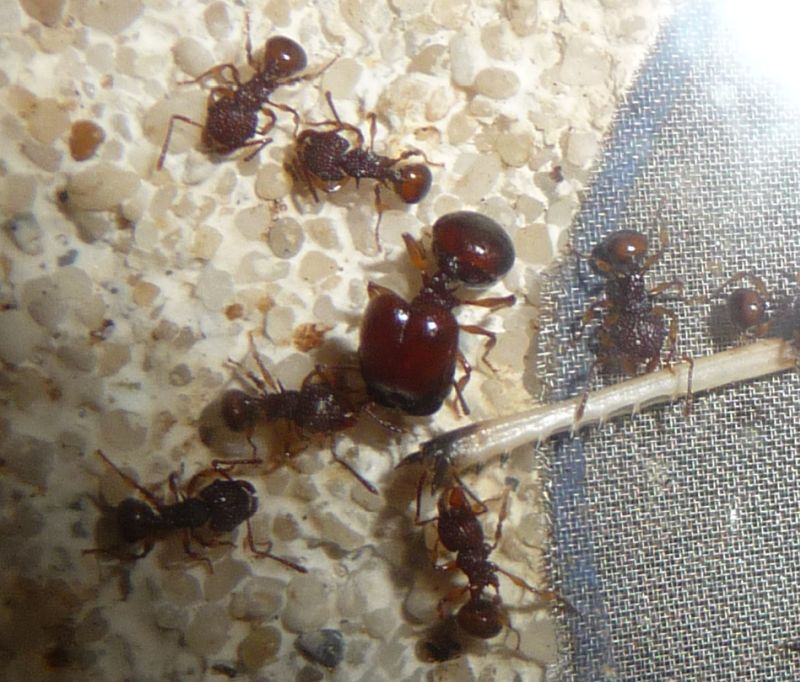
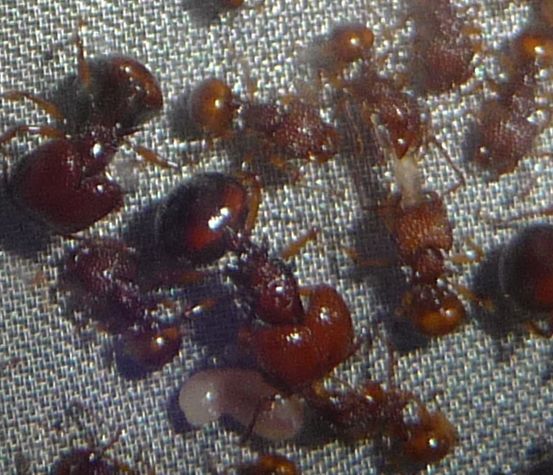
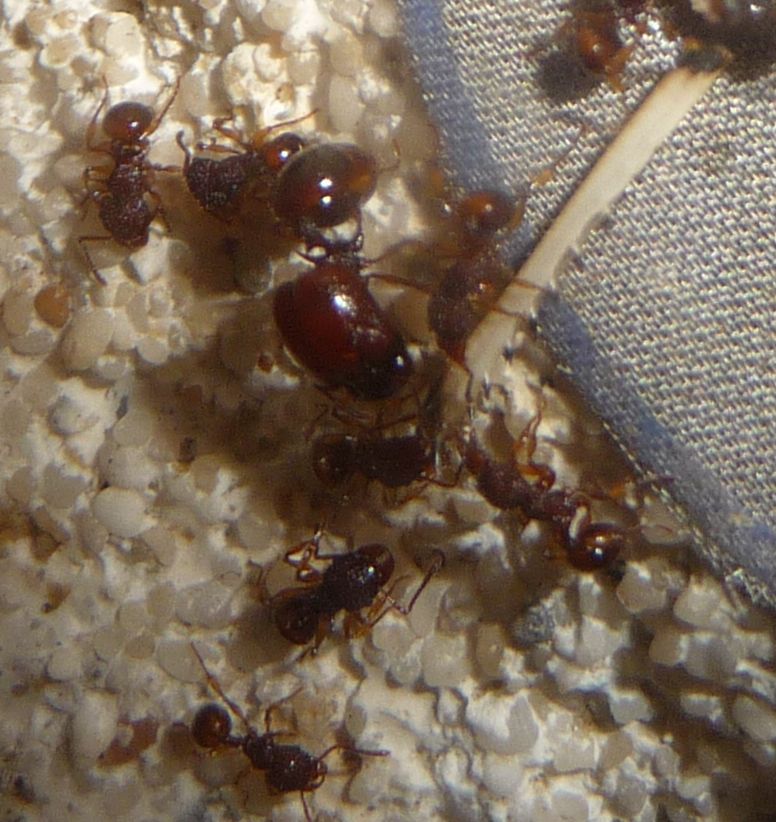
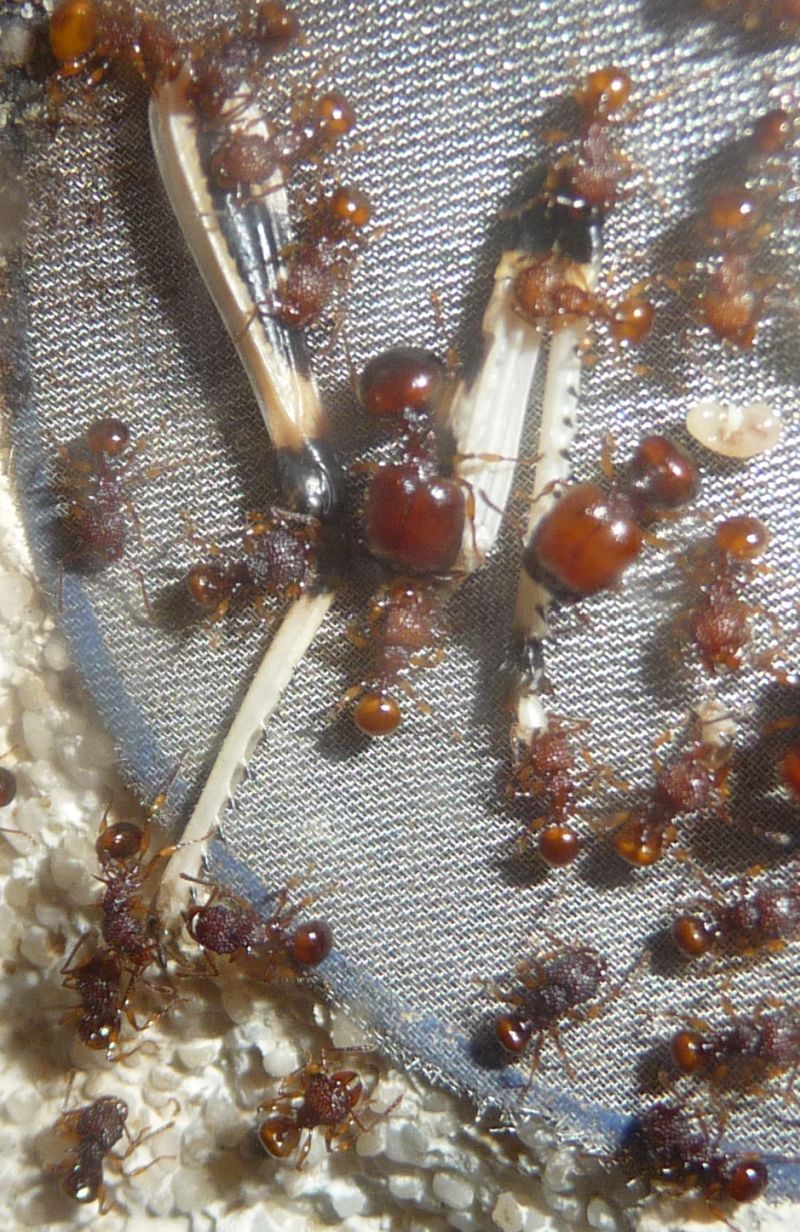
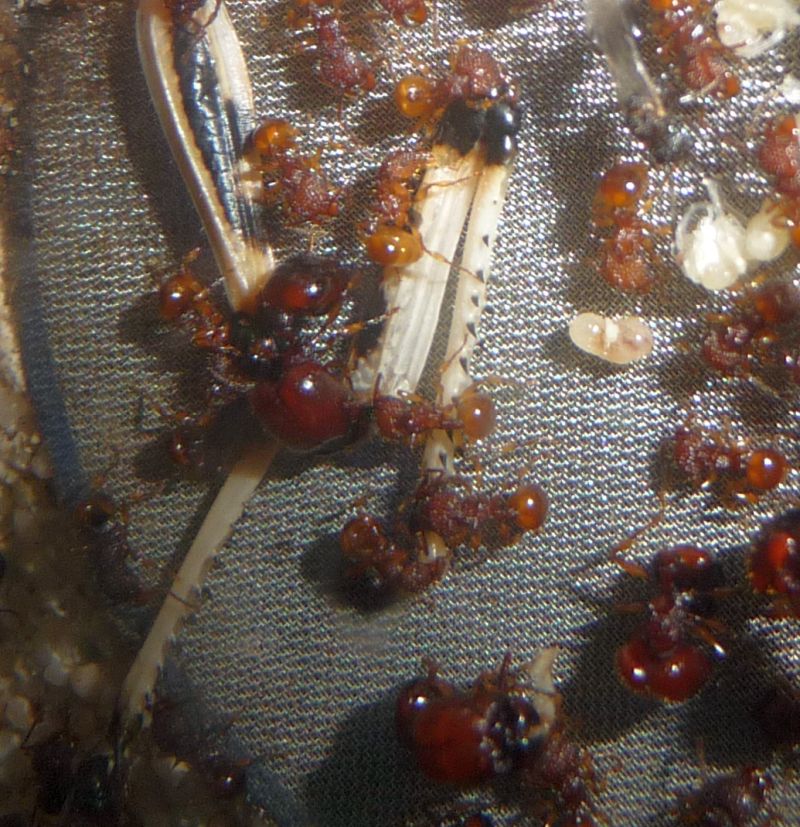
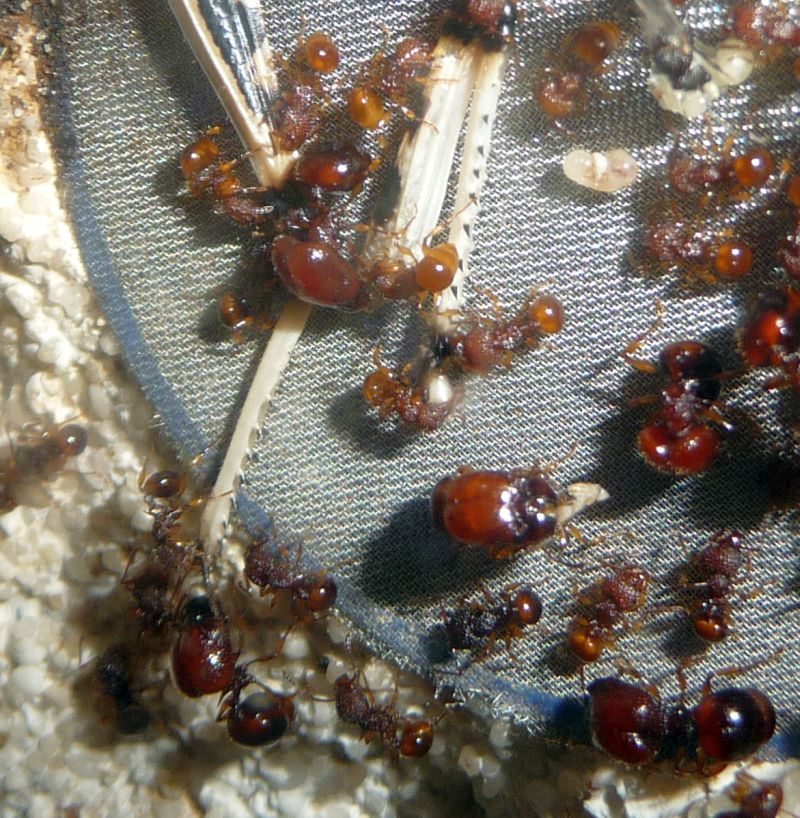
A larva happily chewing on a piece of food placed in it's food pouch on the belly:

Brood and queen:
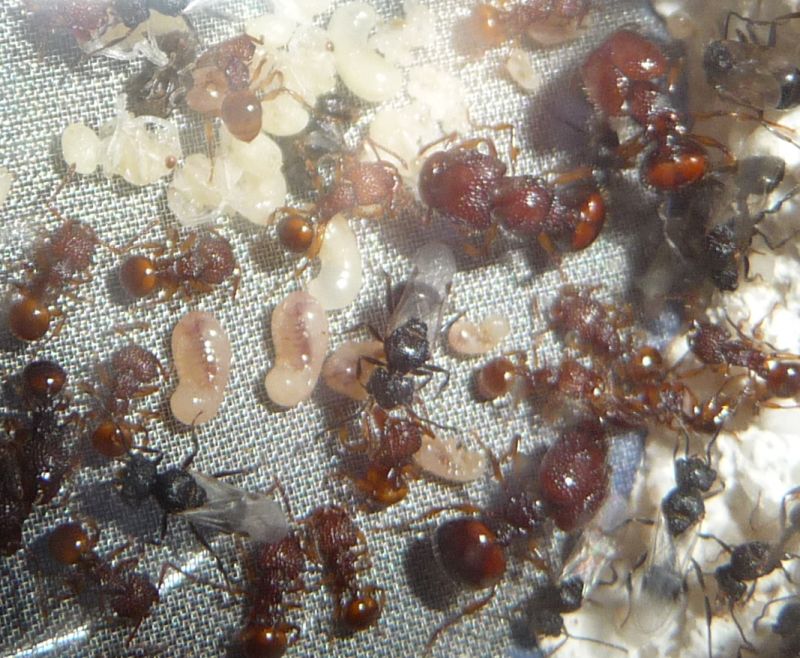
Brood and males:

The colony as a whole, including their stash of chia seed. Chia are their most favorite seed. They drag the seed to the nest and moisten them and when the seed have softened, they are milling them.
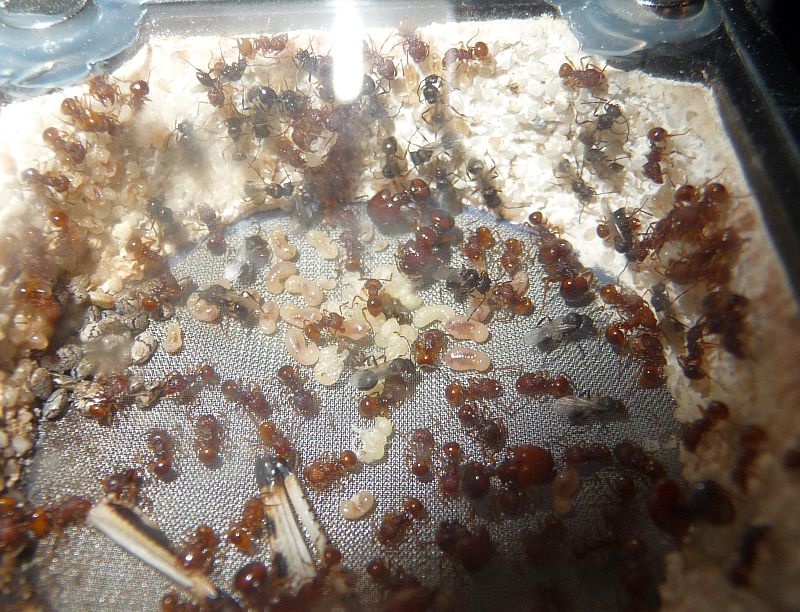
Funnily, their toilet corner is close to the left of their seed stash

And they have a lot of brood stashed on the walls of the nest, I call it the "wall of brood"

Today, my Messor colony staged a nuptial flight.
I caught the queen alates and (after killing them humanely) fed them to my other ant colonies.
This was met with a lot of enthusiasm.
Ants appear to be good food for other ants (well, there are many ant species who hunt other ants or raid ant nests, so this did not really come as a surprise).
The Acanthomyrmex also loved the offering.
The workers dragged the alate directly into their nest to cut it down and to feed the brood.
(yes, for reasons unknown their toilet = dark dirty patch is right next to the butchery, the seed stash and the nest proper).

There is a lot of brood at the moment (sadly, I also see some male pupae again; males really seem to be a major goal here).
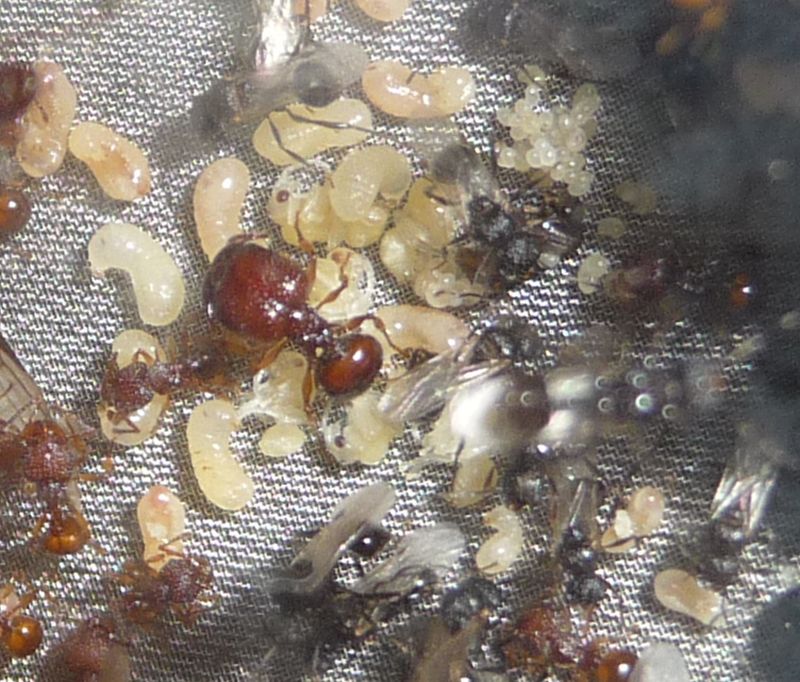
And some of the majors, I just love how goofy they look
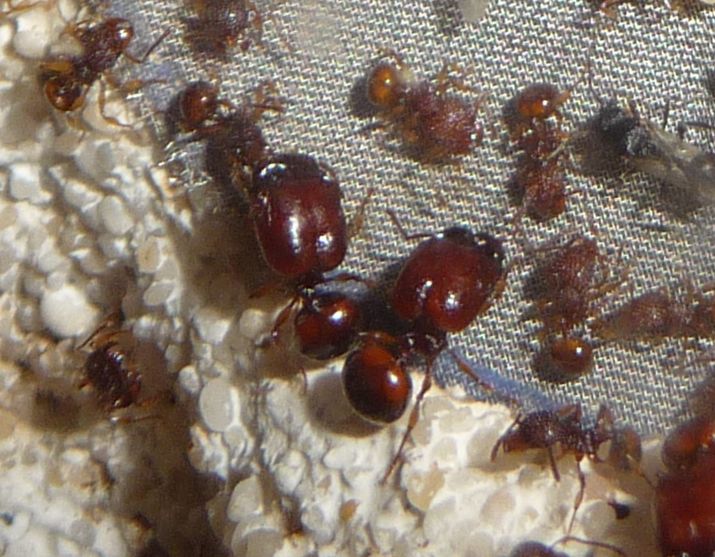
These girls continue to do well.
Since they are tropical, they do not need hibernation during winter.
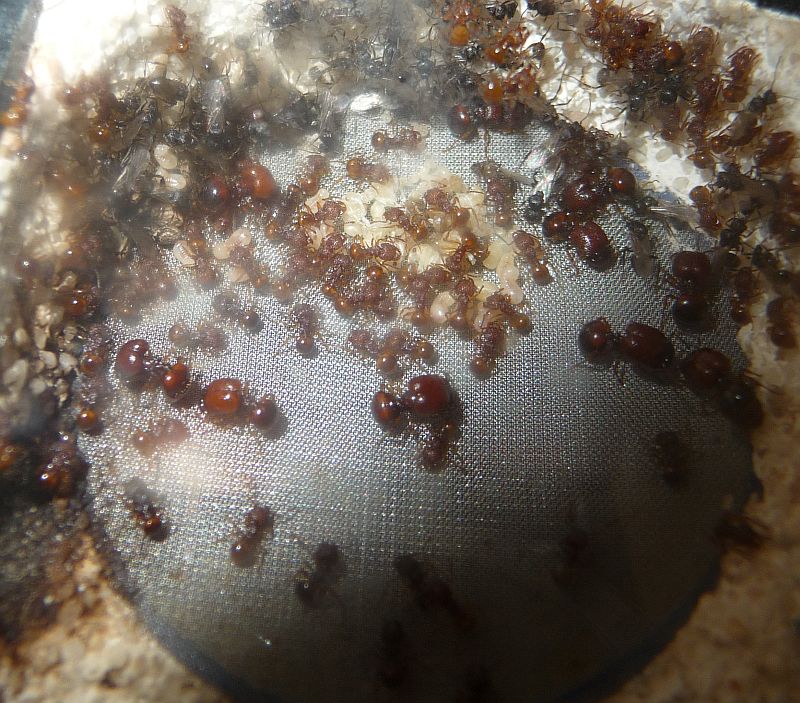
They even nibbled on the small piece of popcorn (which I gave as a treat!)
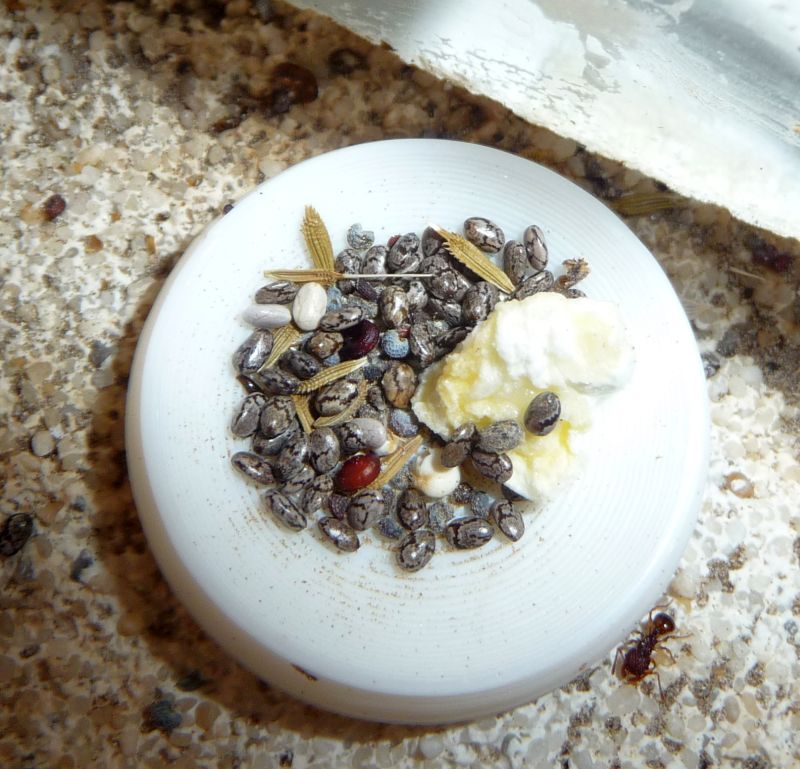
These ants are just too cute. This is one of my favor colonies here to watch, thanks for posting.
It is starting to get chilly, so the girls are back with their heat cable.
This is still a work in progress, right now, the cable is not in the final position, since I still use it to entice my Camponotus lateralis colony to move into their new Foranto nest. When the C. lateralis go into diapause (they still have larger larvae) I will re-arrange the cable again.

Edited by Ernteameise, October 6 2025 - 10:12 AM.
0 members, 1 guests, 0 anonymous users